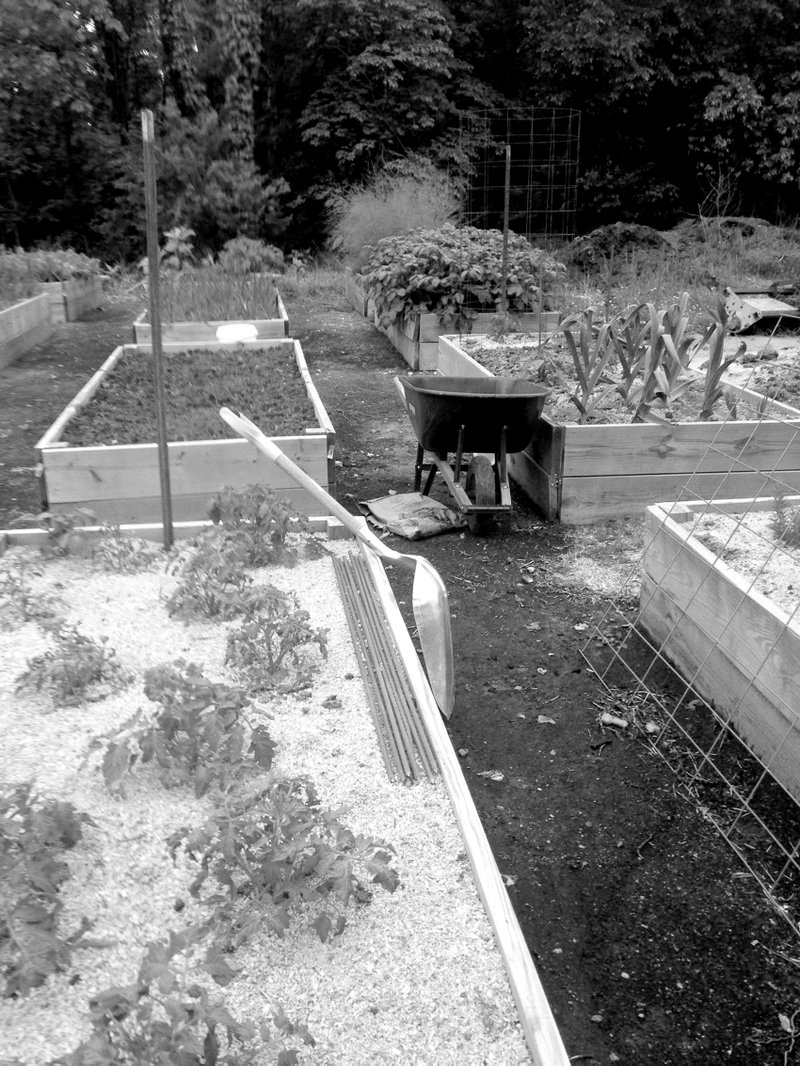I love to garden. So when my wife Linda and I began building our new house last year, we made sure there was an area where we could have a garden. In fact, since the spot we really wanted for a garden was pretty steep, we had a neighbor level it with his dozer. We then built twelve raised beds. Each bed is 4-feet wide by 10-feet long by 20-inches high. And there's plenty of room for more beds if needed.
Since the beds were new, we were able to determine the composition of our soil. Most of what we used was composted chicken manure mixed with mushroom compost. We also bought a load of composted soil from Heirloom Soils in Sandusky, Okla. The mushroom compost came from Miami, Okla., and the chicken manure came from a nearby farm that uses sawdust from a local cabinet shop. And, lastly, we added leaves that we raked from our yard. The resulting mix made for a very mellow soil with a nice texture, but would it grow a garden?
Last spring (2014) we planted our first garden in the new raised beds even though we were just getting started on our new house. Living next door made this possible. We needed to be at the house site almost every day, so that allowed us to work in the garden as needed. One thing we did not have for most of last summer was a source of water for the garden. So, for the most part, we were dependent on rain for water. As construction continued on the house, we eventually got water to the garden but not until summer was mostly over. Nevertheless, I would say that the first year of gardening in the raised beds was a qualified success.
The peppers we planted did great, as did the lettuce. Linda planted one bed to asparagus, and those plants came up a lot thicker than I would have imagined. On the other hand, I planted okra twice but to no avail. It just didn't grow well. Which shouldn't be a surprise since we haven't tested the soil's pH level. The tomatoes were fair. They produced well and we had more than we could eat, but some of the plants developed some sort of wilt or rust. Our potatoes were a success.
I'm optimistic that this year will be better. I guess time will tell. So far, so good. Our kale has been tremendous; the lettuce looks and tastes great. The peppers and tomatoes are looking good. Our potatoes seem to be shooting out of the ground. They are blooming now. I'm curious to see if they produce below ground. Their growth above ground is nothing short of phenomenal. The onions and garlic are doing well. Linda's herb garden is looking good. The one she planted last spring didn't make it through the winter, but that is probably my fault. I didn't protect it enough from cold weather.
Our asparagus bed is doing well. We really enjoyed fresh asparagus this spring. We only cut it for a few weeks, but next year we will be able to eat it for a longer period.
I have always told people it takes about five years to build a good garden soil. I think that is about right but, with some of the things we did at the start of our garden, it probably hastened the process.
I have continued to improve our raised beds this spring by adding natural amendments such as bone meal, blood meal and natural rock phosphates, as well as more leaves. And, of course, we bury all our kitchen scraps (plant material, egg shells, etc., but not meat). We use wood shavings for mulch, which helps keep the soil moist and eventually breaks down into humus.
I know what gardening books have to say about wood shavings and acidity, but I haven't found using it as a mulch to be a problem -- nor oak leaves either, for that matter. Actually, I don't worry about pH as long as I am adding compost to my garden every year. Compost tends to become neutral as it breaks down, so by the time you add it to your soil the pH has taken care of itself. I don't stir the wood shavings into the soil until the gardening season is over so it has all winter to break down before it can affect the pH level in the soil at gardening time.
Now is a good time to be planting string beans, sweet corn, tomatoes, peppers and onions. It's not too late for these to do well in your garden. Pretty soon it will be time to plant purple-hull peas, black-eyed peas, okra, lima beans and more -- all the warm season plants. Happy gardening!
Sam Byrnes is a Gentry area resident who has been gardening from his youth. He may be contacted by email at [email protected]. Opinions expressed are those of the author.
Editorial on 05/13/2015
